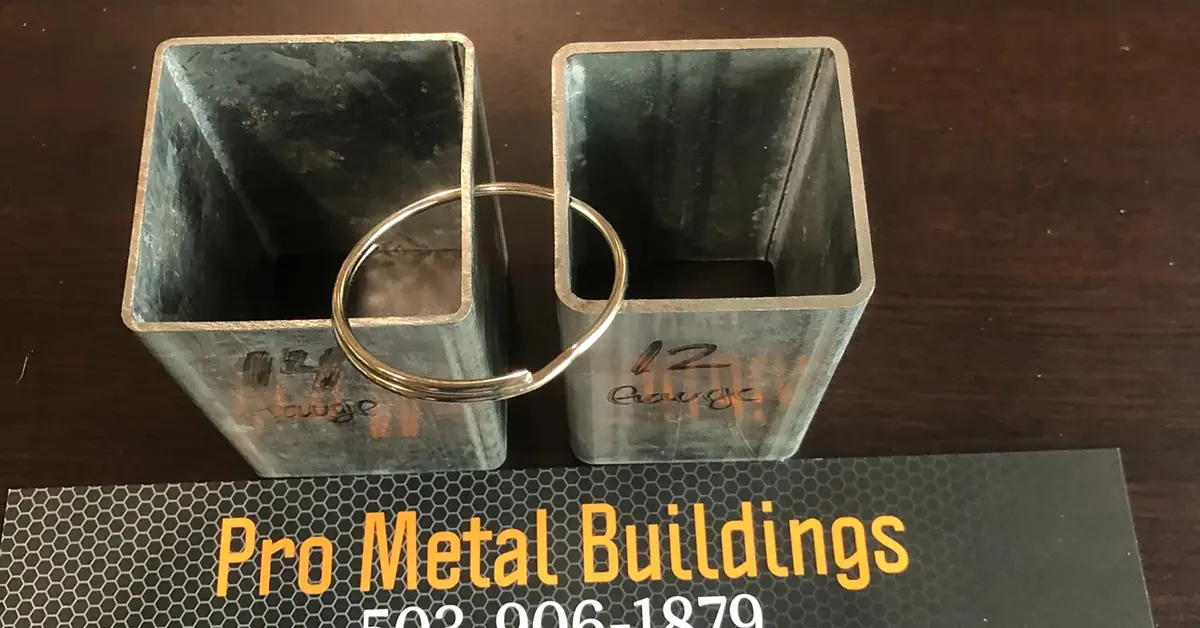Welcome to Pro Metal Building’s blog!
The difference between 12-gauge and 14-gauge steel primarily lies in their thickness, strength, and suitability for various applications. Here’s a detailed comparison:
1. Thickness
- 12-Gauge Steel: Thicker, measuring approximately 0.1046 inches (2.66 mm).
- 14-Gauge Steel: Thinner, measuring approximately 0.0747 inches (1.90 mm).
2. Strength and Durability
- 12-Gauge Steel:
- Stronger and more durable due to its greater thickness.
- Better at withstanding heavy loads, high winds, and snow.
- Ideal for regions with harsh weather conditions.
- 14-Gauge Steel:
- Less strong but still durable for moderate use.
- Suitable for areas with milder climates or lighter structural needs.
3. Cost
- 12-Gauge Steel: More expensive because of the extra material and increased durability.
- 14-Gauge Steel: More cost-effective for lighter-duty buildings.
4. Applications
- 12-Gauge Steel:
- Recommended for structures requiring extra support, such as large metal barns, carports in high-wind areas, or buildings with heavy snow loads.
- Frequently used in commercial and industrial metal buildings.
- 14-Gauge Steel:
- Commonly used for residential carports, light-duty garages, and smaller storage units.
- Works well for general-purpose structures in areas with minimal weather extremes.
5. Lifespan
- 12-Gauge Steel: Longer lifespan due to its enhanced durability and resistance to bending or damage.
- 14-Gauge Steel: Adequate lifespan for lighter applications but may show wear or damage sooner under heavy stress.
Key Takeaway
- 12-Gauge Steel is the better choice for strength and longevity in demanding conditions, but it comes at a higher cost.
- 14-Gauge Steel is a more economical option for standard structures where extreme durability is not essential.
Choosing the right gauge depends on your specific needs, budget, and environmental conditions.

